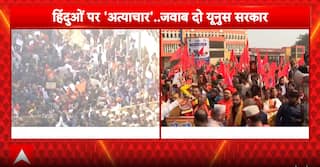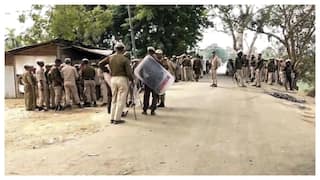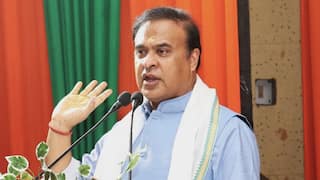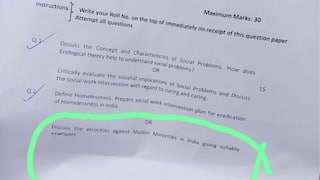World Polio Day 2023: What Is Post Polio Syndrome? Know All About It
There is a term in polio which is called post polio syndrome where in a patient who has had paralytic polio, starts feeling more weak after around 15 years.

Polio occurs due to polio virus which is a type of enterovirus and there is another term for polio which we call paralytic polio. It occurs around 0.5 to 0.05% of the infectious individuals and causes infection of the anterior horn cells of the spinal cord. According to Dr. Puja Kushwah, who is a Sr. Consultant of Neurology, at Metro Hospital, Noida, "Due to their damage, the patient gets paralytic polio whose symptoms vary greatly depending on the condition of the legs. Paralysis is more commonly seen in the legs as compared to the upper limbs. There is a term in polio which we call post polio syndrome where in a patient who has had paralytic polio, starts feeling more weak after around 15 years."
Unmasking The Hidden Pain: Understanding Post-Polio Syndrome
Dr. Siddhant Mahajan- who is the Founder of StemRX Nutraceuticals said, "Post-polio syndrome (PPS), a condition that can emerge decades after the initial infection, continues to affect millions of people worldwide. It is a condition that typically strikes polio survivors 15 to 40 years after their initial recovery. The precise cause of PPS remains elusive, but experts believe it may be related to the excessive stress that polio places on motor neurons. Over time, these overworked neurons may start to deteriorate, leading to the characteristic symptoms of PPS."
"Symptoms of PPS can vary widely among individuals but commonly include muscle weakness, fatigue, muscle and joint pain, and difficulties with breathing or swallowing. Many PPS patients also report a heightened sensitivity to cold temperatures, which can exacerbate their symptoms. These physical challenges can result in a significantly reduced quality of life, as patients struggle with daily activities that were once manageable. Due to nerve involvement and infection, the patient develops lower limb weakness with foot drop and muscular atrophy of the lower limb," he added.
The Road Ahead: Regenerative Medicine's Promise
While there is no cure for Post-Polio Syndrome, researchers are increasingly turning to regenerative medicine as a potential source of hope for patients suffering from this debilitating condition. Dr. Siddhant Mahajan said that regenerative medicine harnesses the body's own ability to repair and regenerate damaged tissues, offering a novel approach to treating a wide range of diseases and injuries.
"One promising avenue in regenerative medicine for PPS involves mesenchymal cell therapy. These cells have the unique ability to differentiate into various cell types, making them a potential solution for replenishing the damaged motor neurons in PPS patients. By introducing healthy mesenchymal cells into the affected areas, researchers hope to stimulate the regeneration of damaged neurons, thereby improving muscle function and reducing pain," he continued to say.
"Additionally, advances in regenerative medicine have led to the development of innovative therapies like tissue engineering and gene therapy, which hold immense potential in treating PPS. Tissue engineering can create artificial muscle tissues that could potentially replace damaged muscle, while gene therapy aims to correct the underlying genetic and molecular factors contributing to PPS," he added.
Post Polio Syndrome Highlighting Eye Movement:
Check out below Health Tools-
Calculate Your Body Mass Index ( BMI )






































